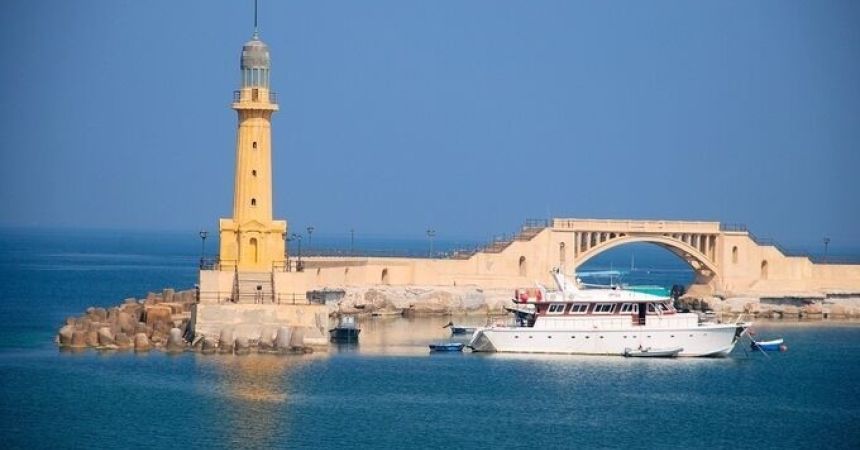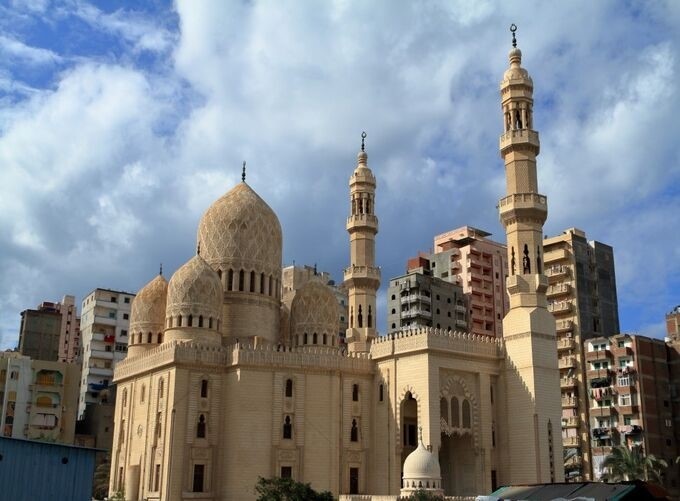
Explore Alexandria, Egypt – History Meets the Sea
Discovering Alexandria, Egypt: The Pearl of the Mediterranean
Nestled along the northern coast of Egypt, Alexandria stands as a testament to the rich tapestry of history and culture that defines the country. Founded by Alexander the Great in 331 BCE, this storied city was once the heart of the Hellenistic world, a hub of learning and culture, and home to two of the ancient world's greatest wonders: the Lighthouse of Alexandria and the Great Library. Today, Alexandria offers a blend of ancient monuments, stunning Mediterranean views, and vibrant modern life. This guide will take you through the best that Cairo and Alexandria Tour has to offer, from its historical sites to its contemporary attractions.
A Brief History of Alexandria
Alexandria's historical significance is vast, having been a center of Hellenistic civilization, a beacon of learning, and a crossroads of various cultures. The city was founded by Alexander the Great and quickly grew into one of the most important cities of the ancient world.
1.1. The Hellenistic Era
During this period, Alexandria was renowned for its Great Library, which housed hundreds of thousands of scrolls and was considered the largest library in the ancient world. The city was also home to the Lighthouse of Alexandria, one of the Seven Wonders of the Ancient World.
1.2. Roman and Byzantine Periods
Following the conquest by Rome, Alexandria continued to thrive as a major center of trade and learning. It played a significant role in early Christian history, with the establishment of one of the earliest Christian communities.
 1.3. Islamic Era and Modern Times
1.3. Islamic Era and Modern Times
After the Arab conquest in the 7th century, Alexandria became an important center of Islamic scholarship and trade. Today, it remains a vibrant city that celebrates its rich heritage while embracing modernity.
Must-See Historical Sites in Alexandria
2.1. The Catacombs of Kom El Shoqafa
The Catacombs of Kom El Shoqafa, considered one of the Seven Wonders of the Middle Ages, is a fascinating blend of Egyptian, Greek, and Roman architectural styles.
- Key Features: The catacombs include a series of tombs, statues, and archaeological artifacts, providing a unique glimpse into ancient burial practices.
- Exploration Tips: Wear comfortable shoes and bring a flashlight, as some areas can be dimly lit.
2.2. Pompey's Pillar
This towering Roman triumphal column stands as a testament to Alexandria's ancient grandeur.
- Historical Significance: Erected in honor of Emperor Diocletian, it is one of the largest ancient monoliths and a significant symbol of Roman influence in Egypt.
- Nearby Attractions: Explore the ruins of the Serapeum, a temple dedicated to the Greco-Egyptian god Serapis.
2.3. The Alexandria National Museum
Housed in a restored Italian-style palace, the Alexandria National Museum offers a comprehensive overview of the city's history.
- Exhibits: The museum's collections span from the Pharaonic era to the modern period, including artifacts from the city's Greek, Roman, and Islamic past.
- Must-See Artifacts: Don’t miss the statues of ancient rulers, exquisite jewelry, and the detailed maps showing Alexandria's historical evolution.
2.4. The Roman Amphitheatre
Discovered in the 1960s, this well-preserved Roman amphitheater is a highlight for history enthusiasts.
- Architecture: The amphitheater features thirteen terraces made of white and grey marble, with seating for over 800 spectators.
- Cultural Insights: Imagine the ancient performances and gatherings that took place here, bringing to life Alexandria's rich cultural heritage.
Exploring Modern Alexandria
3.1. Bibliotheca Alexandrina
A modern homage to the Great Library of Alexandria, the Bibliotheca Alexandrina is a beacon of knowledge and culture.
- Architecture: The library's design, with its tilted disc structure and inscriptions in various scripts, is a visual marvel.
- What to See: Visit the library's museums, art galleries, planetarium, and special collections that celebrate ancient and modern knowledge.
3.2. Alexandria Corniche
Stretching along the Mediterranean coast, the Alexandria Corniche is perfect for leisurely walks, offering stunning sea views and a vibrant atmosphere.
- Highlights: Enjoy the picturesque scenery, visit the many cafes and restaurants, and watch the sunset over the Mediterranean.
- Activities: Take a boat ride in the Eastern Harbor or explore the Qaitbay Citadel at the western end of the Corniche.
3.3. Montaza Palace and Gardens
This sprawling royal palace complex offers a peaceful retreat from the bustling city.
- Gardens: Wander through the beautifully landscaped gardens, featuring exotic plants, flowers, and palm trees.
- Palace: Although the palace itself is not open to the public, the exterior architecture and surrounding gardens are worth exploring.
Cultural Experiences and Local Life
4.1. El-Mursi Abul Abbas Mosque
This stunning mosque, one of Alexandria's largest, is a significant religious and architectural landmark.
- Architecture: The mosque's design includes intricate carvings, ornate minarets, and beautiful domes.
- Cultural Significance: Named after the 13th-century Andalusian saint, El-Mursi Abul Abbas, the mosque is a center of worship and cultural heritage.

4.2. Souk Districts and Shopping
Exploring Alexandria's markets and souks offers a taste of local life and a chance to purchase unique souvenirs.
- Attarine Souk: Known for its antiques and curios, this market is a treasure trove for those seeking unique finds.
- City Center Markets: Browse through stalls selling everything from spices and textiles to handcrafted goods.
4.3. Culinary Delights
Alexandria's cuisine reflects its diverse cultural influences, offering a variety of delicious dishes.
- Seafood: Enjoy fresh seafood dishes at local restaurants like Fish Market and Balbaa Seafood Village.
- Traditional Dishes: Try Egyptian favorites such as koshari, ful medames, and hawawshi at traditional eateries.
Day Trips and Nearby Attractions
5.1. Alamein
Located about 100 kilometers west of Alexandria, Alamein is a significant historical site from World War II.
- War Cemeteries and Memorials: Visit the Commonwealth, German, and Italian war cemeteries, and the Alamein War Museum.
- Historical Insights: Learn about the pivotal battles that took place here and the broader context of World War II in North Africa.
5.2. Rosetta (Rashid)
Famous for the discovery of the Rosetta Stone, this town offers historical and cultural insights.
- Ottoman Houses: Wander through the well-preserved Ottoman-era houses and learn about Rosetta's history as a trade hub.
- Rosetta Museum: Explore exhibits related to the Rosetta Stone and the town's historical significance.
Practical Information for Travelers
6.1. Best Time to Visit
The best time to visit Alexandria is during the spring (March to June) and autumn (September to November) when the weather is mild and pleasant.
6.2. Getting There and Around in Alexandria
- Flights: Borg El Arab Airport serves Alexandria, with domestic and international flights. Cairo International Airport is also an option, with a direct train or bus connection to Alexandria.
- Local Transportation: Taxis, ride-sharing apps like Uber and Careem, and public buses are widely available. Walking is a great way to explore the central areas.
6.3. Accommodation in Egypt
- Luxury Hotels: Stay at the historic Cecil Hotel or the modern Four Seasons Hotel Alexandria for upscale amenities and prime locations.
- Mid-Range Options: Consider hotels like the Steigenberger Cecil Hotel or the Hilton Alexandria Corniche for comfortable and well-located accommodations.
- Budget-Friendly: Hostels and budget hotels are available in the city center and near major attractions.
6.4. Health and Safety
- Travel Insurance: Ensure you have comprehensive travel insurance covering medical emergencies, trip cancellations, and lost belongings.
- Health Precautions: Drink bottled water, use sunscreen, and stay hydrated. Be cautious with street food to avoid stomach issues.
- Safety: Alexandria is generally safe for tourists, but it's always wise to stay informed about local conditions and follow basic safety practices.
Tips for a Memorable Visit Egypt
7.1. Plan Ahead
- Itinerary: Plan your activities and excursions in advance to make the most of your time in Alexandria.
- Booking Tours: Use reputable tour operators for guided tours to historical sites and day trips.
7.2. Respect Local Customs
- Dress Modestly: While Alexandria is relatively liberal, dressing modestly is appreciated, especially when visiting religious sites.
- Cultural Sensitivity: Be respectful of local customs and traditions, particularly during the holy month of Ramadan.
7.3. Explore Beyond the Tourist Sites
- Local Experiences: Take the time to explore Alexandria’s cultural and historical sites, and interact with locals to gain a deeper understanding of the region.
- Eco-Tourism: Support eco-friendly initiatives and responsible tourism practices to help preserve Alexandria’s natural beauty.
Discover Ancient Egypt: Timeless Travel Adventure
Alexandria, with its rich history, stunning coastal views, and vibrant culture, is a destination that offers a unique blend of ancient and modern attractions. Whether you're wandering through ancient catacombs, strolling along the Corniche, or exploring the bustling markets, Alexandria promises an unforgettable experience. By planning ahead and following these tips, you can ensure a safe, enjoyable, and enriching journey to this Mediterranean gem. Dive into the historical depths, savor the culinary delights, and immerse yourself in the charm of a Tour to Alexandria, Egypt.



